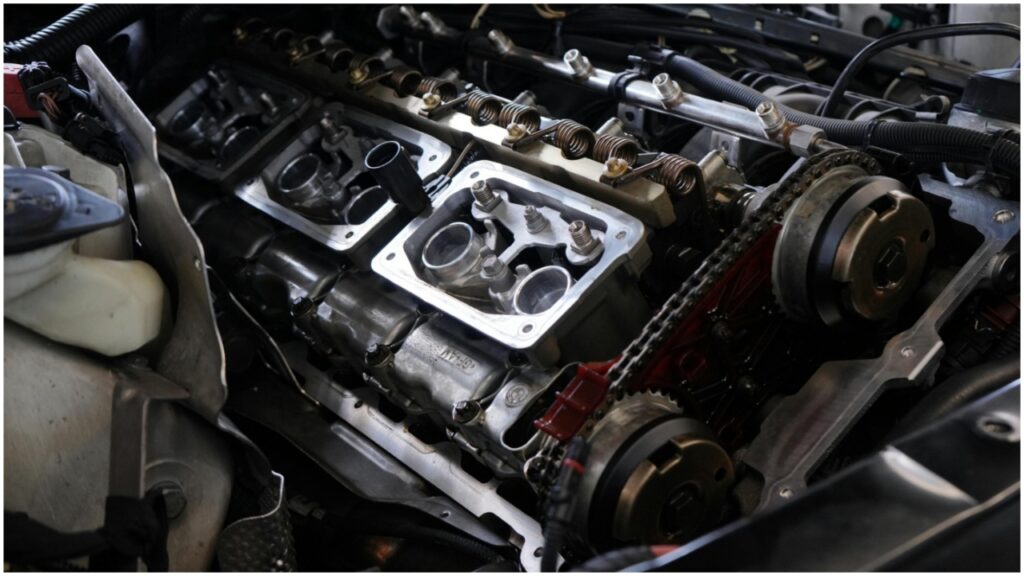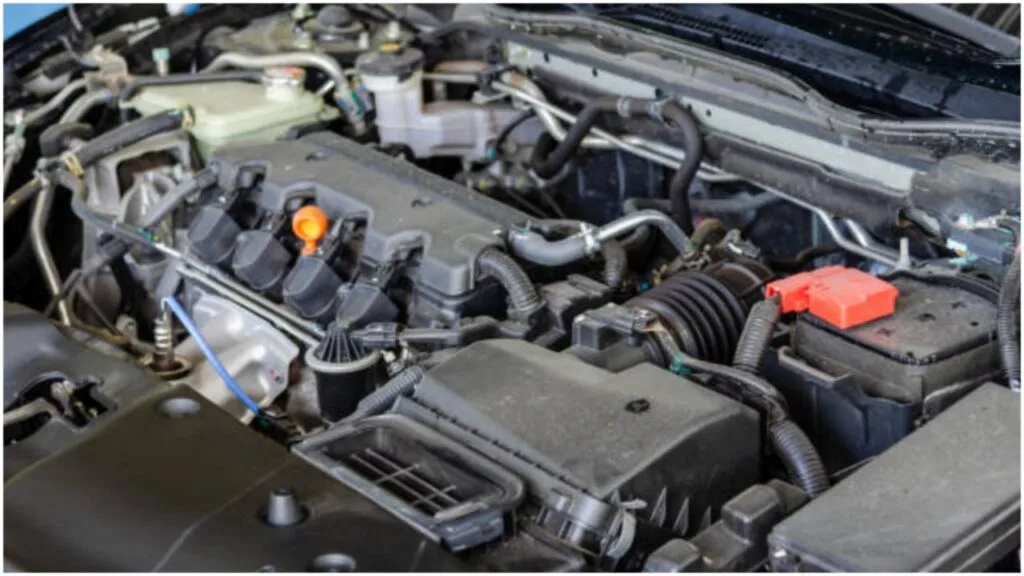A degreaser works much better when cleaning engine parts. Solvents like kerosene or mineral spirits work wonders for breaking down oil, grease, and grime. Kerosene is often favored for cutting through tough grease without being overly harsh. Mineral spirits, on the other hand, evaporate more cleanly, leaving less residue behind.
Water-based degreasers are a solid choice for those looking for something more eco-friendly. They’re less toxic and safer to handle. While they might require more scrubbing, they get the job done. Citrus-based cleaners are also gaining popularity for their effectiveness and pleasant scent.
Avoid harsh solvents like acetone or paint thinner unless you’re dealing with extreme buildup. These can be too aggressive and may harm certain materials.
Always check the manufacturer’s guidelines before choosing a solvent. Some parts, like rubber seals or plastic components, might need extra care.
The method you use is just as important as the solvent. A good soak can loosen dirt, while a stiff brush helps scrub stubborn spots.
A parts washer can make precision cleaning easier and faster. After cleaning, rinse the part thoroughly with water. This step prevents residue from causing future problems.
Whether maintaining a classic car or doing routine care, the proper solvent makes all the difference. It saves time, protects the parts, and ensures everything runs smoothly.
Always work in a well-ventilated space and wear gloves to keep your hands safe. Below are some steps to get a good idea.
The Smell Test: Knowing What Solvent You Need

The solvent you choose depends on the dirt you are up against. Some solvents are like a polite handshake, while others bring out the heavy artillery.
For oily messes, you’ll need something that can break it down without stripping away the good stuff.
The Classic: Mineral Spirits
This one’s a staple in the car enthusiast’s arsenal. It’s cheap, easy to find, and works like a charm for breaking down grease.
But here’s the catch: it’s not the fastest worker. You’ll need to let it sit and soak into the grime.
Brake Cleaner: The Unstoppable Force

If there’s one solvent I keep coming back to, it’s brake cleaner. Spray it on, and watch the magic happen. It evaporates fast, leaving no residue, which is perfect when dealing with sensitive parts.
Just be warned—this stuff doesn’t mess around. Wear gloves, don’t inhale them, and for the love of all things holy, don’t let them near painted surfaces unless you’re okay with them becoming unpainted.
DIY Options: When You’re Feeling Experimental
Sometimes, you look at the price tag on commercial solvents and think, “I can make this myself.” While sounding like a science project, a mix of vinegar and baking soda can handle lighter cleaning jobs.
It’s eco-friendly and will not leave your garage smelling like a chemical plant. But—and this is important—DIY won’t always cut it.
Safety First, Always

Cleaning engine parts aren’t worth losing a finger, an eye, or your lungs. Always suit up. Gloves, goggles, and a mask are non-negotiable.
And ventilation? Make it your best friend. Some of these solvents pack fumes that could knock out an elephant.
Soaking vs. Scrubbing
Some swear by soaking parts in a solvent bath and letting time do the work. Others believe in rolling their sleeves and scrubbing till their arms give out.
My take? Do both. Soak first to loosen things up, then scrub for that satisfying finish. Use a toothbrush for smaller parts and a brass bristle brush for more challenging spots.
Avoiding Overkill: Less Is More
Excess solvent can seep into places it shouldn’t, causing more harm than good. Precision is key here. Spray, dab, or soak with purpose.
Dealing with Stubborn Stains
Sometimes, a stain refuses to budge no matter how hard you try. If you’re not careful, it’ll strip everything, including your patience. Use it sparingly and only on parts that can handle the heat.
Rinse and Repeat

Once your parts are sparkling (or as close to it as possible), rinse them thoroughly. Warm, soapy water is your friend here. And don’t skip drying. A quick blast of compressed air ensures no moisture sticks around to cause rust.
FAQ’s
What to use to clean engine parts?
Cleaning engine parts requires the right tools and cleaners for the job. Degreasers are your best friend when tackling built-up grime and oil.
Choose a solvent-based or water-based degreaser, depending on your preference. Solvent-based degreasers are strong and cut through heavy grease quickly. Water-based ones are eco-friendlier and safer for regular use.
Start by brushing off loose dirt. Apply the degreaser to the part, letting it sit for a few minutes. This helps break down tough grease. Use a stiff brush or toothbrush to scrub away the residue. For intricate parts, a parts cleaner brush or even a soft-bristled paintbrush works well.
If the part is small, you can soak it in a cleaning solution. For stubborn grime, a steam cleaner or pressure washer might be needed. Avoid these delicate components.
Rinse thoroughly to remove all cleaner residue. Dry the parts completely with a clean cloth or compressed air. Moisture left behind can cause rust. Finish by inspecting for wear or damage before reassembling.
Using diesel to clean engine parts?
Diesel is surprisingly effective at breaking down grease, grime, and oil. It’s like a budget-friendly solvent that’s always within reach.
It’s not overly harsh and won’t damage metal surfaces or delicate parts if used correctly.
It’s great for soaking parts to loosen up stubborn residue, but it takes some effort to get things clean.
After a good soak, you’ll need a stiff or old toothbrush to scrub off the diesel. It doesn’t evaporate quickly, so it stays on the parts.
You’ll need to rinse the parts thoroughly afterward with a degreaser or soapy water to ensure no film is left.
Work in a well-ventilated space, and don’t skip gloves unless you enjoy smelling like a gas station.
Diesel might not be your best bet for rusty or heavily carbon-coated parts. It’s effective but not aggressive enough for extreme cases.
If you’ve got light to moderate grime, though, it’s a cheap and easy option that gets the job done.
Just remember to clean up properly afterward, and don’t pour used diesel down the drain—it’s not exactly eco-friendly.
Diesel might not be the fanciest cleaner in your toolkit, but it’s reliable, accessible, and surprisingly effective.
Diesel or kerosene for engine flush?
Both diesel and kerosene can be used for an engine flush, but kerosene tends to be the safer choice. Diesel is thicker and oilier, which helps dissolve grime and loosen sludge.
Kerosene, on the other hand, is lighter and evaporates more cleanly. It effectively breaks down deposits without leaving as much of an oily film.
That makes it friendlier for the internal parts of your engine. If you go this route, drain it completely and replace it with fresh oil immediately.
Neither option is ideal for modern engines, though. For newer engines with tighter tolerances, it’s better to stick with professional-grade engine flush products designed to be cleaned thoroughly without risking damage.
If you use diesel or kerosene, always flush carefully and avoid overuse. They’re tools for emergencies or deep cleans, not regular maintenance.
Water in engine oil how to clean diesel?
Diesel is a flushing agent that removes the contaminated oil and water mixture. Start by draining all the oil from the engine, ensuring you get as much of the water out as possible.
Once drained, pour in clean diesel fuel where the oil goes. Use enough to fill the system lightly, but don’t overdo it.
Run the engine briefly—just for a minute or two—at idle. This allows the diesel to circulate, picking up any remaining water and sludge.
Be careful not to run it too long; diesel isn’t a lubricant like oil and can cause wear if left too long.
After this, drain the diesel completely. You might notice it comes out milky or dirty, which means it’s done its job.
Once drained, replace the oil filter and refill the engine with fresh oil. Start the engine again and let it idle for a while. Check the dipstick to ensure the oil looks clean and clear.
Conclusion
Cleaning engine parts or flushing out water-contaminated oil using diesel can be an effective, budget-friendly solution, but without risks.
Diesel excels at breaking down grime, dissolving sludge, and removing contaminants, but it requires proper handling. Always drain thoroughly and follow up with fresh oil to avoid any residue causing harm.
Whether you’re cleaning parts or tackling water in the engine oil, diesel is a quick fix for specific situations, not a regular maintenance tool.
Professional-grade products or a mechanic’s expertise are often better for modern engines or severe issues. Treat your engine carefully, use diesel wisely when needed, and always prioritize thorough cleanup.

